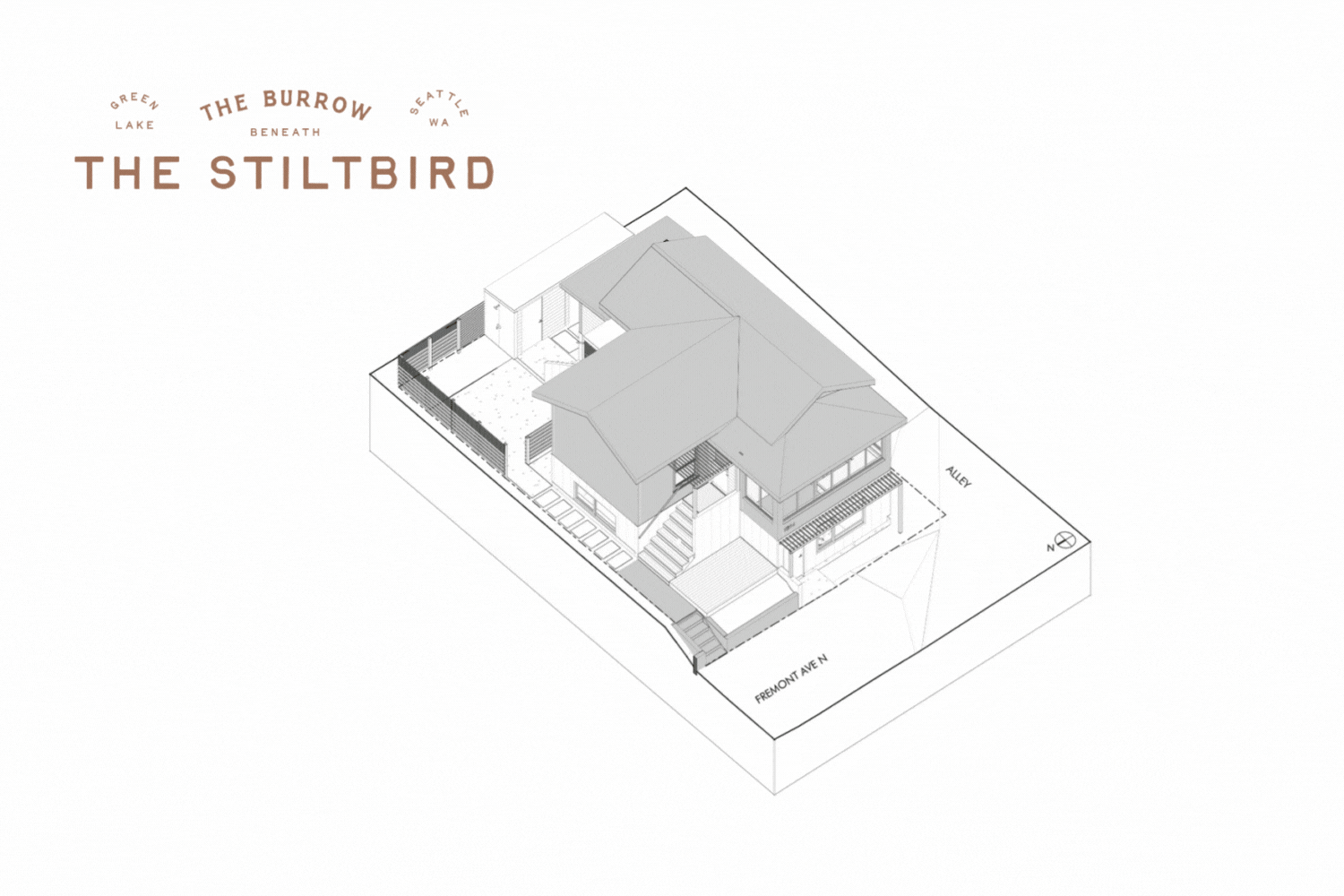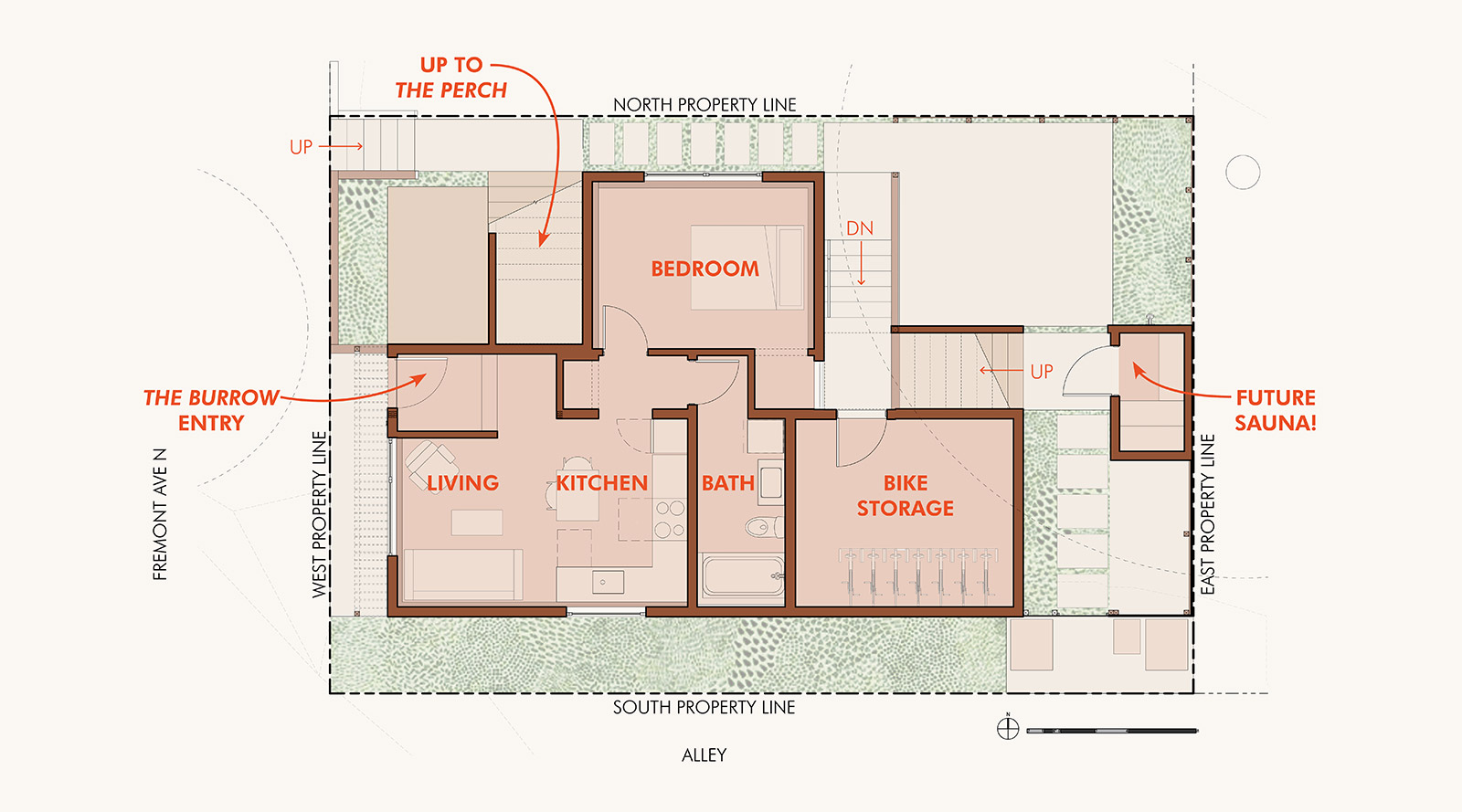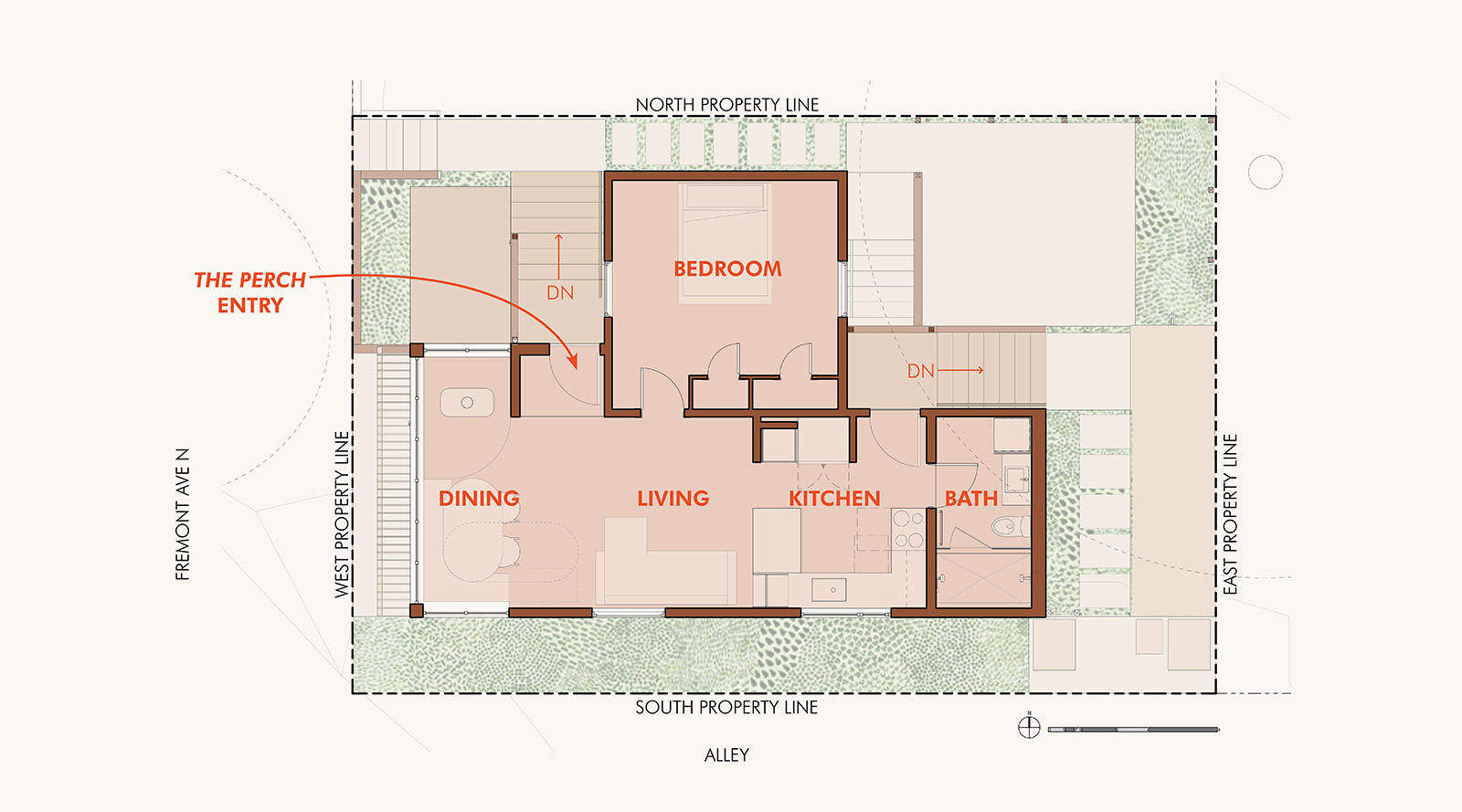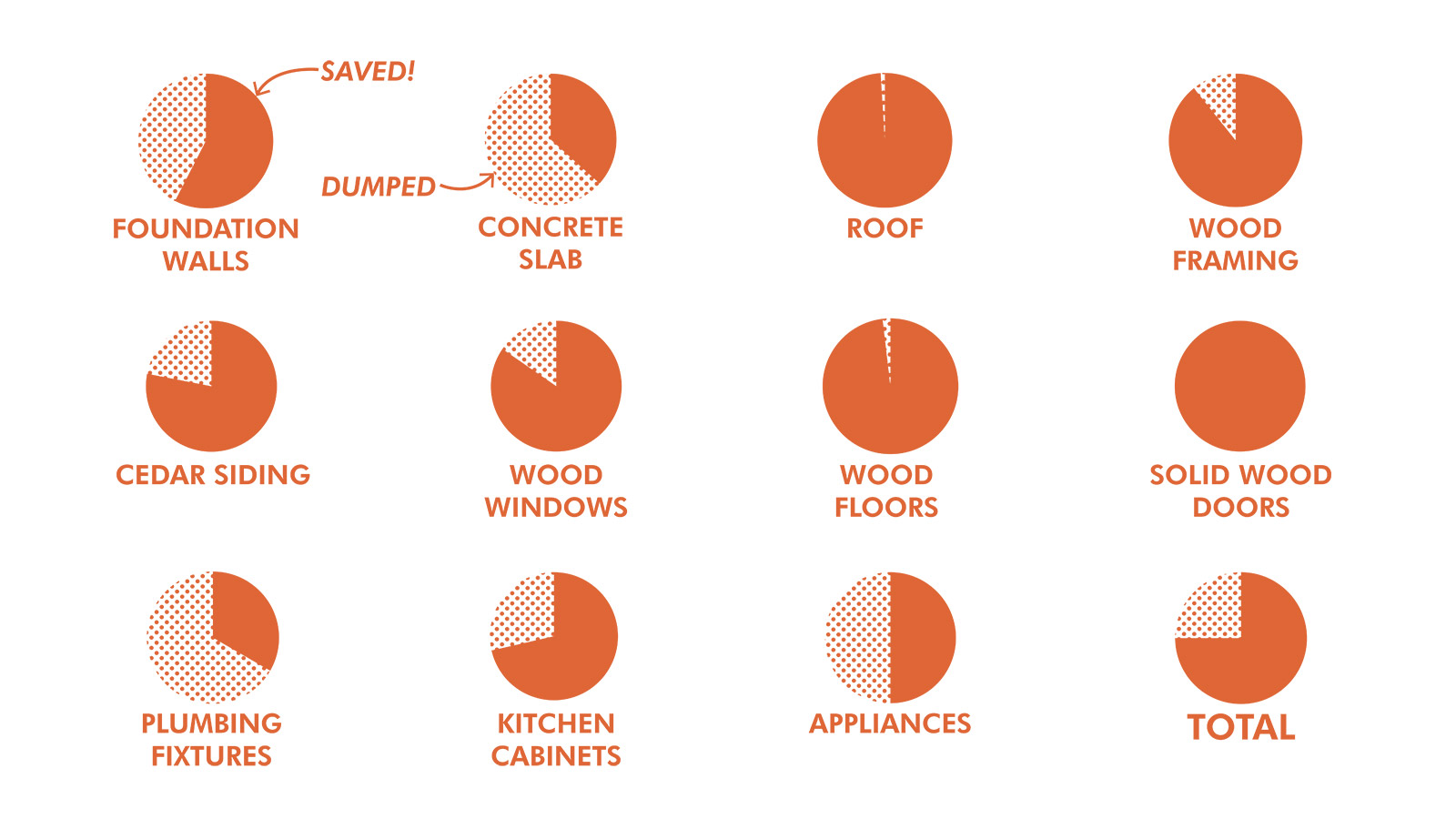A housing shortage, some status quo, neighborhood density, sunk embodied carbon, and a Kickstarter campaign: What do these varied topics have in common? They aptly describe the obstacles and opportunities facing Seattle today. Each of these subjects certainly merits their own blog post, but for the sake of brevity (and to pique your curiosity!) we’ll share some key points and players with thoughts on how these issues may be addressed. One of BUILD’s own, Carey Moran, has a particularly interesting personal project in Green Lake.
Housing Shortage
Housing options across the state are increasing due to recent legislation aimed at addressing the housing shortage. Thanks to House Bill 1110 (HB 1110), Washington state is joining its west coast neighbors in eliminating the single-family zone. Currently, homeowners in Seattle have the option to add an attached accessory dwelling unit (ADU), and a detached accessory dwelling unit (DADU) on the same property without providing additional parking or occupying any of the units; this as a result of City legislation that passed in 2019. BUILD’s own Case Study houses provide real world examples of how incorporating ADUs and DADUs provide flexibility and a financial boost for the owners.
HB 1110, which has been delivered to the governor, legalizes duplexes statewide with an option for additional units depending on the size of the city, the lot’s proximity to major transit, and affordability. Fourplexes will be permitted everywhere in cities like Seattle with a population larger than 75,000; sixplexes will be allowable if the lot is within a quarter mile of a major transit stop, or if two of the units are designated as affordable (defined as rent that is affordable to 60% of the area median income (AMI) or 80% of AMI for ownership). Increased density in our single-family neighborhoods is crucial to addressing equity in our housing supply; and with at least 75% of Seattle’s land dedicated to detached single-family homes, this legislation has the potential to positively impact our city.
The Social & Environmental Cost of the Status Quo
There are always those who want to protect the status quo. Some, like Edmonds City Councilmember Diane Buckshnis, are citing the environmental cost that increased density has on their watershed as an argument to preserve single-family zoning. But the environmental cost of maintaining the status quo is more severe. It’s documented that detached single-family homes have had negative social and environmental impacts since their inception. Suburban sprawl encourages larger homes and vehicular reliance, which equates to increased energy consumption. On the other hand, increased density in our city’s neighborhoods means less sprawl in our natural areas, more walkable neighborhoods, reduced energy consumption, and lower infrastructure costs. BUILD has been working on several different types of housing that introduce thoughtful density to our cities, including cottage developments and townhouses with ADUs.
Increasing Neighborhood Density & Sunk Embodied Carbon
Other opponents of HB1110 have argued that eliminating local control would destroy existing neighborhood character; although new buildings will continue to be constructed, increased density doesn’t mean the end of prevailing character. Layering in density, while preserving existing character, requires a shift in the way we engage our housing stock. The value in older homes is often overlooked, but they have an indisputable leg up on new construction: sunk embodied carbon. If you’re not familiar with the term, embodied carbon is the amount of energy consumed to construct our built environments; and sunk embodied carbon is the energy invested in the structure that cannot be recovered. It is imperative that we reduce our energy consumption, especially in our built environments. Doing so will require a shift in values and an increased investment in sunk embodied carbon.
A Passion Project in Green Lake
 One of the partners here at BUILD, Carey Moran, is working on a personal project that brings many of these concepts together. The Stiltbird project is a robust renovation of a 1907 home near Green Lake, which adds a rental unit, the Burrow, to the lower level as a means to offset costs. At a mere 1,734 square feet, the lot isn’t large enough to support a DADU, but it does maximize the existing footprint. Ironically, this little house exceeds the development potential of the tiny lot; starting from scratch would have resulted in an even smaller house. The upper level was raised to bring ceilings up to code, and the partial crawl space was dug out to increase living area. The existing 1,030 square-foot one bed and bath home is being transformed into two single bed and bath units, with a total of 1,415 square feet of living space.
One of the partners here at BUILD, Carey Moran, is working on a personal project that brings many of these concepts together. The Stiltbird project is a robust renovation of a 1907 home near Green Lake, which adds a rental unit, the Burrow, to the lower level as a means to offset costs. At a mere 1,734 square feet, the lot isn’t large enough to support a DADU, but it does maximize the existing footprint. Ironically, this little house exceeds the development potential of the tiny lot; starting from scratch would have resulted in an even smaller house. The upper level was raised to bring ceilings up to code, and the partial crawl space was dug out to increase living area. The existing 1,030 square-foot one bed and bath home is being transformed into two single bed and bath units, with a total of 1,415 square feet of living space.
Saving the existing structure preserves the existing character (not to mention a footprint with negative development potential), saves on material costs, and has succeeded in saving 76% of materials from going to the dump.
Working with existing buildings isn’t the typical go-to strategy for many reasons — not the least of which is increased labor costs due to the added time to deal with unforeseen conditions — but it is a strategy we should be pursuing more often. To be clear, transforming a single-family property into multiple units comes at a premium price, but it provides the eventual benefit of rental income to offset the mortgage. There’s no question that the upfront cost presents a big hurdle, then add the inability to leverage equity for a rental unit that doesn’t yet exist with a little inflation and you’ve got a real challenge. Carey and the Stiltbird team have encountered all of these issues and have launched a Kickstarter campaign to involve the community in the completion of the project, pre-selling branded swag and night stays at the rental unit.
Head over to the campaign page to read more about the project and get yourself some swag to support this bite-sized development! We look forward to more opportunities to add creative and thoughtful housing options to the cities in our state. Stay tuned for more on the Stiltbird project and other small scale multi-family projects.
Cheers from Team BUILD!










